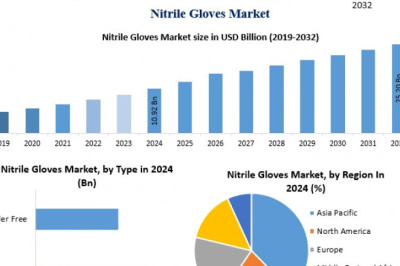views
What are the international logistics modes of cross-border e-commerce?
Cross-border e-commerce logistics is a very important link in the industry of cross-border e-commerce, but at present, there is a lot of room for improvement in price and after-sales service providers. Let's take a look at several standard modes of cross-border e-commerce logistics summarized by Max. Now there are more and more cross-border e-commerce foreign trade sellers. Whenever you start to do business and start to have ordered, the first question to consider is how to choose express logistics to send the goods to foreign countries. Generally speaking, as long as it is a small seller can deliver goods through the platform, you can choose the international small package and other channels. But now big sellers or sellers on independent platforms need to optimize logistics costs, consider customer experience, integrate logistics resources, and explore new forms of logistics. Therefore, we should first understand what are the international logistics modes of cross-border e-commerce? The postal network basically covers the whole world, which is more extensive than any other logistics channel. This is mainly due to the Universal Postal Union and the Kamala Postal Organization (KPG). The Universal Postal Union (UPU) is a specialized agency under the United Nations on international postal affairs. It adopts some conventions and regulations to improve international postal services and develop international cooperation in postal affairs.
A large number of UPU members and the uneven development of postal systems among them make it difficult to promote deep postal cooperation among the Member States. So in 2002, the postal services of the six countries with relatively developed postal systems (China, the United States, Japan, Australia, South Korea, and Hong Kong) held a postal CEO summit in the United States and formed the Kamala Postal Organization, which was later joined by Spain and the United Kingdom. Kamala requires all member countries to meet a 98 percent delivery time standard. If the goods are not delivered by the specified date, the delivery operator will have to pay the customer 100% of the price of the goods. These stringent requirements have prompted member states to deepen cooperation and strive to improve the level of services. For example, a postal parcel from China to the United States usually arrives within 15 days. According to incomplete statistics, 70% of the parcels delivered by China's cross-border e-commerce exports are delivered through the postal system, of which China Post accounts for about 50%. Other postal services used by Chinese sellers include Hong Kong Post and Singapore Post. Vietnam focuses on cross-border e-commerce logistics supply chain services and is the only enterprise integrating global postal channels.
The international delivery model refers to the four commercial delivery giants, namely DHL, TNT, FedEx, and UPS. These international express delivery companies, through their self-built global network, make use of strong IT systems and localized services around the world to bring excellent logistics experience to overseas users who shop online for Chinese products. A package sent to the United States via UPS, for example, can arrive in as little as 48 hours. However, excellent service comes at a high price. Generally, Chinese merchants only use international commercial express to deliver goods when customers have strong timeliness requirements.
Domestic express mainly refers to EMS, SF, and "four links and one-up". In terms of cross-border logistics, "STO and YTO" has been established earlier, but it has not been expanded until recently. For example, STO was launched in March 2014, YTO cooperated with CJ Korean Express in April 2014, and ZTO, Huitong and Yunda just started cross-border logistics business. The international business of SF Express is more mature. At present, it has opened express services to the United States, Australia, South Korea, Japan, Singapore, Malaysia, Thailand, Vietnam, and other countries, and it usually takes 2-3 days to deliver the express to Asian countries. In the domestic express, EMS international business is the most perfect. Relies on the postal channel, EMS can direct to more than 60 countries in the world, the cost is lower than the big four express delivery giants, China has a strong customs ability, 2-3 days to arrive in Asian countries, 5-7 days to Europe and the United States. Dedicated Line Logistics Model Cross-border dedicated line logistics are usually transported to foreign countries by air package, and then delivered to the destination country through the partner company. The advantage of dedicated line logistics is that it can concentrate large quantities of goods to a specific country or region and reduce costs through the scale effect. Therefore, its price is generally lower than commercial express. In time, special line logistics is slightly slower than commercial express but much faster than postal parcels.
The most common dedicated line logistics products in the market are the United States dedicated line, Europe dedicated line, Australia dedicated line, Russia dedicated line, and so on. There are also many logistics companies that launched the Middle East dedicated line, South America dedicated line, South Africa dedicated line, and so on. Overseas storage mode Overseas storage service refers to the one-stop control and management service for the seller to store, sort, pack and deliver goods at the sales destination. To be exact, overseas storage should include the first transport, storage management, and local distribution of three parts. First shipment: Chinese merchants ship goods to overseas warehouses by sea, air, land, or combined transportation. Warehouse management: Chinese merchants can operate overseas warehousing goods remotely and manage inventory in real-time through a logistics information system. Local distribution: the overseas warehouse center will deliver the goods to the customer by local mail or express according to the order information. The above five modes basically cover the logistics modes and characteristics of current cross-border e-commerce, but there are also some "alternative" modes. For example, although Belgium Post belongs to the postal parcel model, it is positioned as a high-quality seller and provides far better products and services than other postal products.











